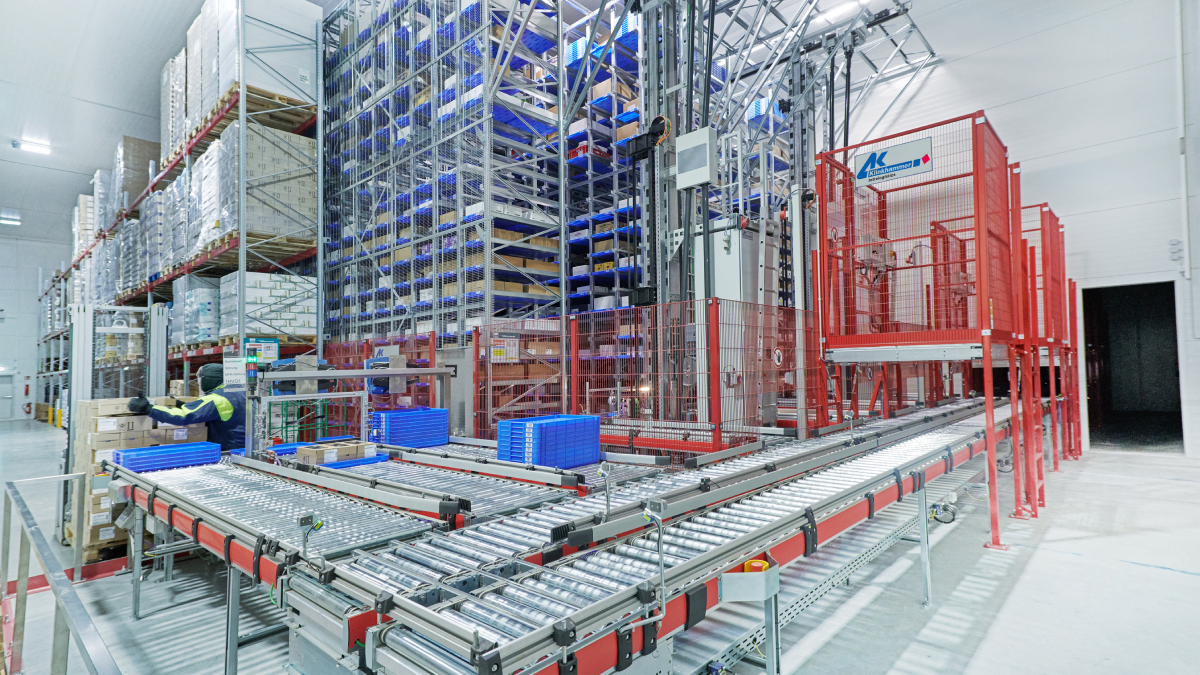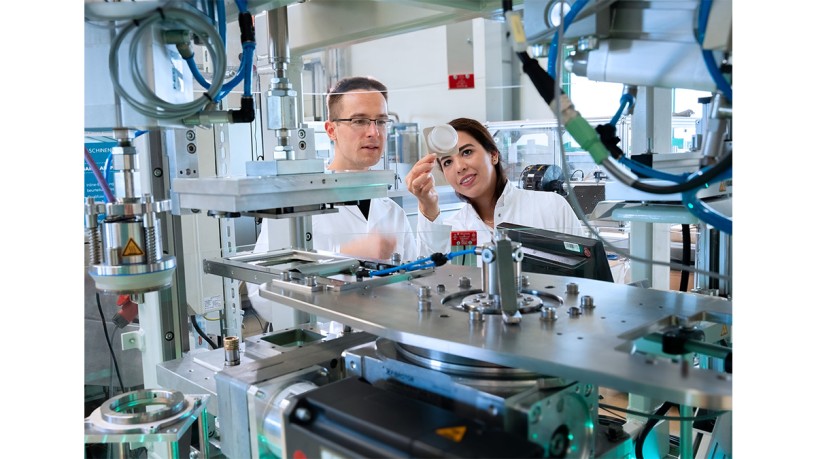Bespoke logistics solutions and robotic systems.
Challenges in deep-freeze warehouses
Deep-freeze warehouses require constantly low temperatures (from -18°C) to ensure the quality of goods, which leads to high operating costs. The demands of this energy-intensive technology are high. In order to counteract the lack of skilled workers, deep-freeze warehouses are increasingly turning to automation to reduce manual labour at low temperatures and to improve working conditions. However, these technological adaptations have to be in line with the applicable statutory requirements and safety standards with which European food sector companies are required to comply:
• Food safety and traceability: An uninterrupted refrigeration chain pursuant to Regulation (EE) No. 178/2002 is required. Deep-frozen products must be stored and transported at a temperature of at least -18°C, with short-term deviations of up to 3°C. This guarantees food safety and high product quality along the entire refrigeration chain.
• Energy efficiency and cost management: The high energy consumption and rising energy costs necessitate the use of energy-efficient technologies and effective energy management.
• Safety and personnel management: Appropriate protective measures such as low temperature-resistant protective clothing and regular training are necessary to prevent accidents and to ensure productivity in the workplace.
Automation solutions and robotic systems
Numerous companies are supporting the optimisation of intralogistics processes in deep-freeze warehouses with automated and robot-aided technologies.
SSI SCHÄFER GMBH & CO KG in Neunkirchen offers specialised robot and automation systems. These systems increase efficiency and reduce energy consumption. The most important solutions include:
- - Robots for layer picking: these robots are in use at a logistics service provider in the USA. They optimise the handling of product layers and speed up picking.
- - Robots for fully-automatic de-palletisation and singling of ice cream from RO-BER Industrieroboter GmbH, a SSI SCHÄFER Group partner company.
- - Robots for case picking: these robots have been implemented at ASKO in Norway and increase the speed and accuracy of picking.
According to SSI SCHÄFER, fully-automatic warehouse solutions reduce space requirements by up to 60%. Special automated storage and retrieval systems lower the amount of energy needed by up to 25%. The logistics software WAMAS further improves processes, for example, with the sequential provisioning of cartons and special tracking functions, explains Dr Dirk Werthmann, Senior Project Engineer Logistics.
Klinkhammer Intralogistics GmbH in Nuremberg also offers innovative solutions that are tailored specifically to the requirements of temperature-controlled storage. It uses automated storage and retrieval systems and shuttle systems in small part warehouses in order to maximise flexibility and efficiency. The KlinCAT multi-level shuttle system and a level-bound shuttle system have been successfully implemented in refrigerated warehouses such as those at Frischdienst Walther GmbH and Früchte Jork GmbH. Another example is the 20-metre-high deep-freeze warehouse for fresh produce supplier Gebrüder Kofler GmbH in Tyrol.
ProLoCon GmbH from Niederkassel develops bespoke logistics concepts and integrates robots into the planning of deep-freeze warehouses. These systems ensure a high warehousing density and efficient material flows even at extreme temperatures. Automation reduces manual activities, which lowers operating costs and increases efficiency, emphasises Christian Manderla, the company's managing director.
The integration of logistics planning and automation improves warehouse logistics processes, thereby increasing efficiency and flexibility. Experts emphasise the importance of real-time data and both technology- and manufacturer-neutral planning approaches. These approaches improve decision-making and increase adaptability. For instance, the storage space is put to optimum use and costs along the supply chain are reduced. As a result, companies are able to respond faster and better to market changes.

©Klinkhammer Intralogistics GmbH
Challenges, future outlook and sustainability
Refrigerated warehouse logistics faces challenges due to high energy consumption and stringent sustainability requirements. Modern automatic systems such as those of Klinkhammer use energy recovery and power caps to reduce energy consumption and increase efficiency – a crucial advantage in the light of rising energy costs and a lack of skilled workers. In a warehousing system with power caps, the braking energy of the automated storage and retrieval system is buffered directly in the drive system for the next acceleration phase. Technologies such as patented counterweights and energy recovery reduce waste heat and meet energy efficiency and sustainability requirements, explains SSI SCHÄFER.
The aim in the future is to increase automation in deep-freeze environments in order to support companies in increasing efficiency and lowering costs. At the trade fair, numerous exhibitors will be presenting sustainable logistics concepts that use renewable energy and efficient technologies to reduce energy consumption.
Summary
The lack of skilled workers, rising energy costs and growing demand for deep-frozen products are increasing the need for more efficient and sustainable solutions in deep-freeze warehouse logistics. Depending on the application, the use of robotic systems can offer significant advantages in saving energy and reducing personnel costs. The initial investment is high, but experts anticipate that these technologies will lead to savings and increase efficiency in the long term.




